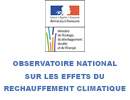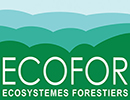TERRADCLIM Adaptation to climate change on wine countries (terroirs) scale
TERRADCLIM Adaptation to climate change on wine countries (terroirs) scale
Many issues raised by climate change cause a lot of questions on the functioning of geosystems on local scales.
A global change will necessarily affect both local climate and wine countries.
In such a context, expected impacts of a possible climate change raise a number of questions, if only to improve adaptation.
In a context of intensification of competition among wine production countries, traditional countries’ wine growers enhance country specificity, partly defined by local climates. The notion of country to the wine grower is a marketing tool because it allows giving wine specificity and identity.
Wine producer are therefore asking for tools and scientific techniques to evaluate current and future agro-climatic potentials, especially through a better knowledge of climate local variations in order to adapt their cultural practices early enough.
Evaluation of climate change on a country (terroir) scale is primary to implement a rational policy of climate change adaptation.
Approaches of these phenomena starting from general flow models are unadapted to “terroir” scales and consequently bring too much approximate results.
Even though real progresses have been recently realized in climate regional modeling, any used models allow making a climate simulation on a local scale (few tens of meters).
It’s therefore on a smaller spatial scale – taking into account ground features as well as material capabilities of wine growers – that will be possible to evaluate impacts dues to climate change.
GICC TERRADCLIM project’s purpose is to implement a method of climate spatial modeling adapted to small scales in order to give answers on future consequences of climate change by adapted simulation. Project is divided into four parts:
• Acquisition of agronomic and meteorological data on experimental vineyards’ scale;
• Climate modeling on wine countries scale and integration of IPCC scenarii, especially by linking atmospheric (RAMS, WRF… ) and statistical modeling;
• Climate change adaptation scenarii of local wines on a time scale of 15 to 30 years by using a multi-agents platform (SMA) ;
• Information transfer to the wine professionals and sensitization to climate change (ex: proposal of adaptation to vineyard scale; meetings researchers/stakeholders …)
Climate modeling will be realized for all experimental vineyards studied since 2008 in the framework of ANR-TERVICLIM ( Loira valley, Champagne, Provence, Burgundy, French Bordeaux, Romania, Spain, Italy, Morocco, Argentina, Chile, Bolivia, Uruguay, South Africa, New Zealand). We deliberately chose vineyards located in different macro-climate areas in order to apprehend climate variations on different scales (macro-, meso,) and to test several IPCC models.
Climate change adaptation scenarii (with SMA) will be made in cooperation with wine professionals through Unions, wine growers and vineyards associations within 3 vineyards: Coteaux du Layon and Montagne Ste Victoire French vineyards, and Mendoza vineyards, in particular Bodega Alta Vista.
To realize this project, involving several disciplines, techniques (vine science, climatology, statistics, digital models) and stakeholders, we’ll seek for knowledge and expertise of other disciplines and wine professionals.
| Coordinators |
Hervé QUENOL – CNRS |
| Partnership |
Partenaires scientifiques
Acteurs/collectivités
Diffusion internationale et vulgarisation d’information scientifique : Chaire UNESCO « culture et tradition du vin ». Institut Jules Guyot – IUVV, Campus Universitaire |
| Funding |
MEEDDM
|
| Budget |
298 000 €
|





